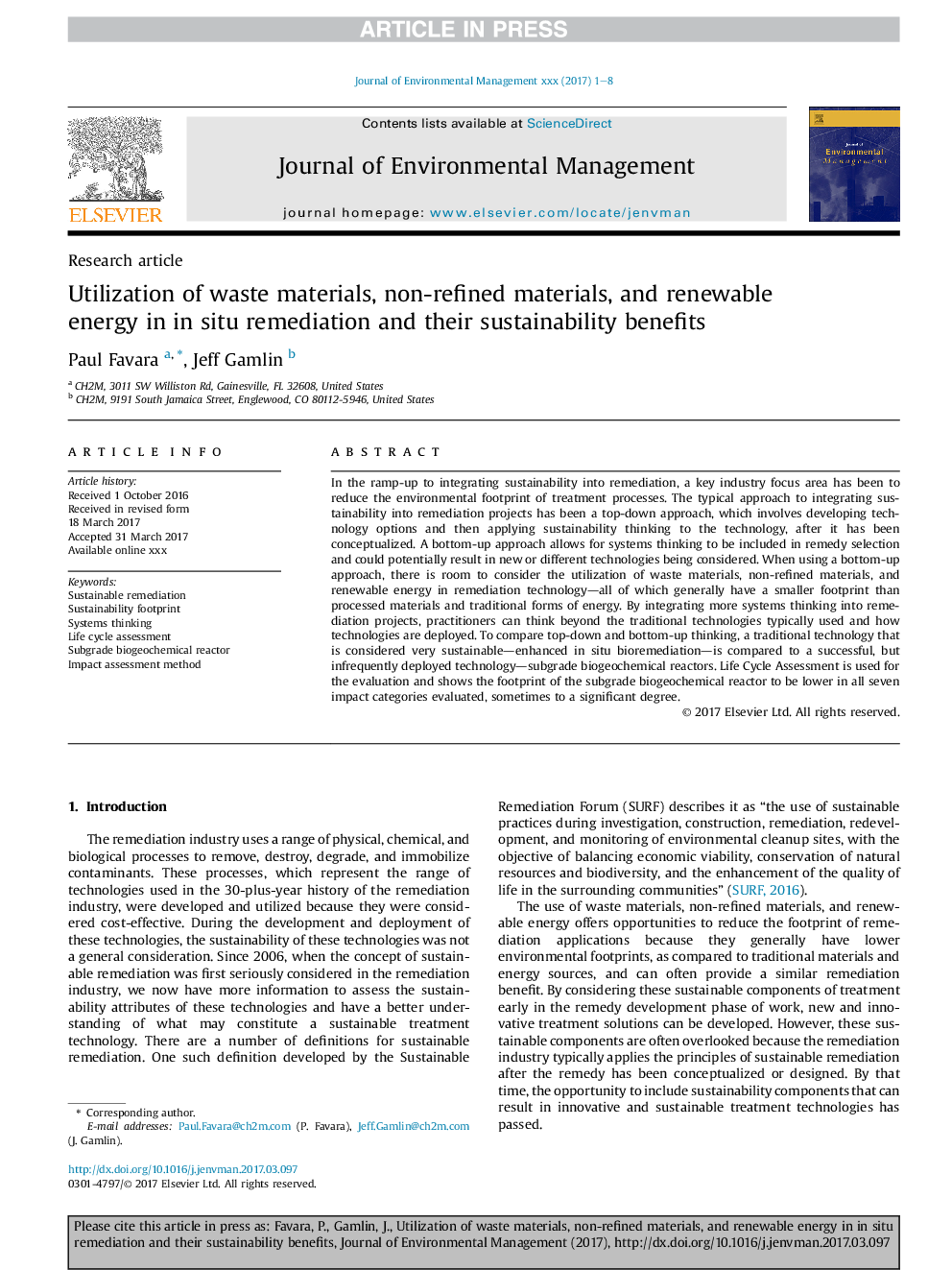ترجمه فارسی عنوان مقاله
مقاله پژوهشی استفاده از مواد زائد، مواد غیر تصفیه شده و انرژی های تجدید پذیر در بازسازی در محل و مزایای پایداری آنها
عنوان انگلیسی
Research articleUtilization of waste materials, non-refined materials, and renewable energy in in situ remediation and their sustainability benefits
| کد مقاله | سال انتشار | تعداد صفحات مقاله انگلیسی |
|---|---|---|
| 148456 | 2017 | 8 صفحه PDF |
منبع

Publisher : Elsevier - Science Direct (الزویر - ساینس دایرکت)
Journal : Journal of Environmental Management, Volume 204, Part 2, 15 December 2017, Pages 730-737
ترجمه کلمات کلیدی
پاکسازی پایدار، راندمان پایداری، تفکر سیستمی، ارزیابی چرخه حیات، راکتور بیوگرافی شیمیایی، روش ارزیابی اثر،
کلمات کلیدی انگلیسی
Sustainable remediation; Sustainability footprint; Systems thinking; Life cycle assessment; Subgrade biogeochemical reactor; Impact assessment method;

